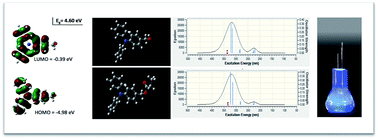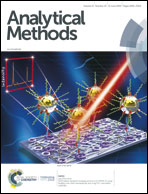Combining computational and experimental approaches to select chromophores to enable the detection of fatty acids via HPLC
Abstract
This paper outlines a protocol, which combines quantum mechanics calculations and experimental synthesis, to enable systematic selection of suitable chromophores based on their stability of fluorescence and efficiency of the chemical reaction. The experimental conditions were optimised for the esterification of fatty acids with the most effective chromophore, 5-(4-(diphenylamine)phenylthiopheny-2-yl)methanol.



 Please wait while we load your content...
Please wait while we load your content...